1 Setting the stage for offline evaluations
Modern digital products lean heavily on AI systems, but their value depends on rigorous evaluation. This chapter sets the foundation for offline evaluations as the model’s first reality check—an efficient, low-risk way to vet ideas before exposing users to change. It situates offline testing within the broader AI development lifecycle, clarifying how it complements online controlled experiments (A/B tests) rather than replacing them, and argues that stronger offline rigor shortens iteration cycles, reduces product risk, and raises confidence in what advances to production.
The chapter explains what offline evaluations are, how they rely on representative data splits (training, validation, holdout), and why freshness and coverage matter to avoid misleading conclusions due to drift or gaps. It emphasizes choosing metrics that reflect the product’s goals and the model’s role—whether ranking, classification, forecasting, NLP, or vision—while keeping complexity and interpretability in check. Two layers of offline work are introduced: canonical evaluations that isolate algorithmic improvements, and deep-dive diagnostics that probe product-facing behaviors across segments and objectives. The methods apply not only to machine learning models but also to heuristics and internal tools, where offline-only validation can sometimes suffice.
Finally, the chapter shows how offline evaluations inform and accelerate online experimentation by narrowing candidates, guiding hypotheses, enabling observability, and building online–offline correlation, with advanced topics like off-policy evaluation previewed. It also flags limits: static offline tests struggle with feedback loops, UX-dependent outcomes, and fast-changing environments, and can be resource-intensive—especially with LLM-based assessments. The takeaway is a balanced, pragmatic practice: use robust offline evaluations to de-risk and speed learning, then confirm real user impact with well-designed online experiments.
What it looks like in practice to develop, iterate, evaluate, and launch features that rely on AI. For a product feature that relies on a model, quality and impact assessment occur both in the offline and online phases of the product development lifecycle. Offline evaluations allow teams to refine the model using historical data, while online assessments validate its real-world performance and user impact once deployed.
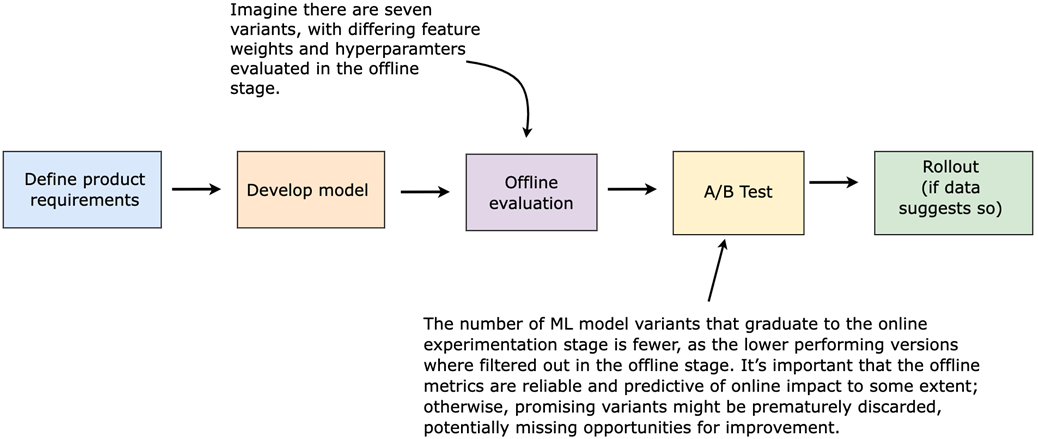
A conceptual overview of AI systems in an industry setting at a high level. The diagram illustrates the key components typically required to build and deploy an AI model. Starting from left to right, input features and training data are closely linked, as both are fed into the model. The model architecture, which is the core of the system, includes trainable weights and other configuration parameters. Hyperparameters, which are not trainable, are used to define the learning process. The loss function guides model training by measuring error, while the optimizer (e.g., gradient descent) updates the weights based on this feedback. Operational and deployment components include the inference pipeline, model output (such as prediction scores and confidence intervals), version control, and model serving infrastructure.
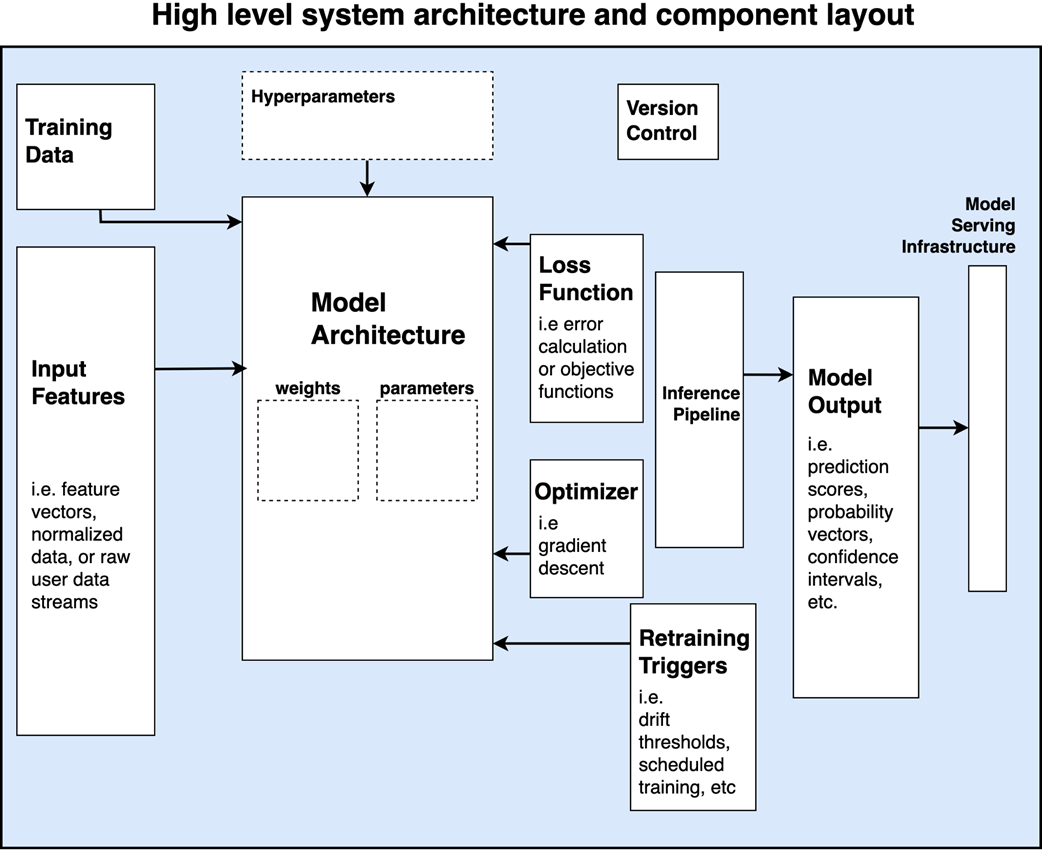
Streaming app utilizing machine learning models to recommend the most relevant content for a user to watch. Each model is evaluated offline using metrics that can assess accuracy, relevancy and overall performance of the items and rank produced by the model.

Differing offline metrics for each recommendation scenario. The Dramatic Yet Light Movies recommendation model uses Precision at K (P@K) to ensure that the top movies in the list are highly relevant movies for the user. The Your Recent Shows model relies on recall as the metric to optimize in an offline setting, as it focuses on ensuring the system retrieves all relevant past TV shows to give customers a complete and personalized experience.
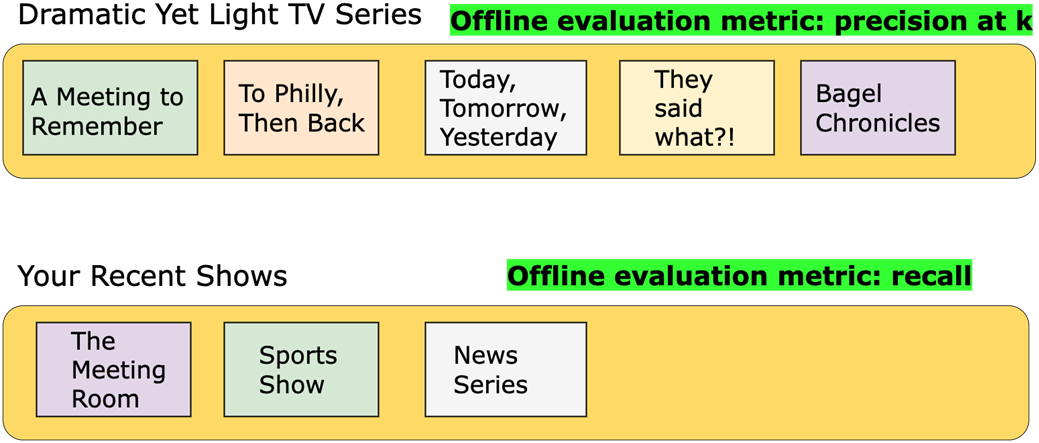
Which metric to optimize towards depends on the use case. Consider the simpler offline evaluation metric, precision at K, that's used commonly in ranking applications. In this example, 5 TV shows are recommended to a user and 3 of them are items the user is actually interested in based on their prior watch history, the Precision at 5 (P@5) would be 3/5, or 60%.
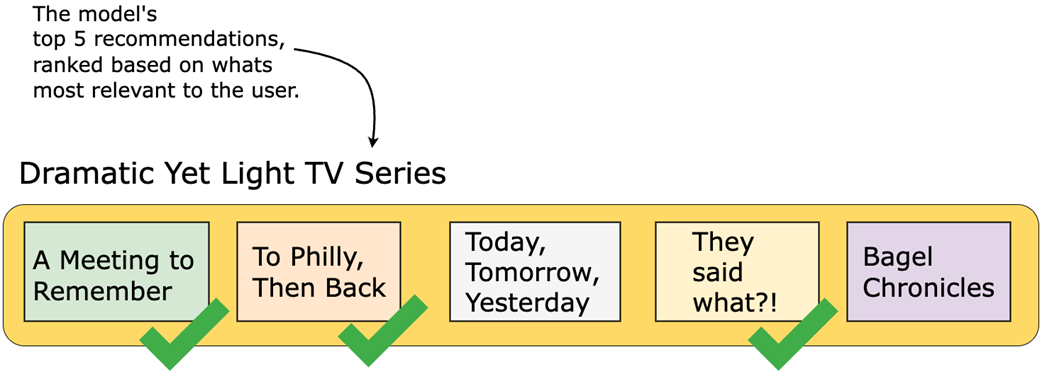
Illustrates how canonical offline evaluations, deep-dive diagnostics, and A/B testing each align with different stages of the model development lifecycle, from early prototyping to post-launch iteration. Each layer plays a distinct role in validating both the technical soundness and real-world impact of machine learning models.
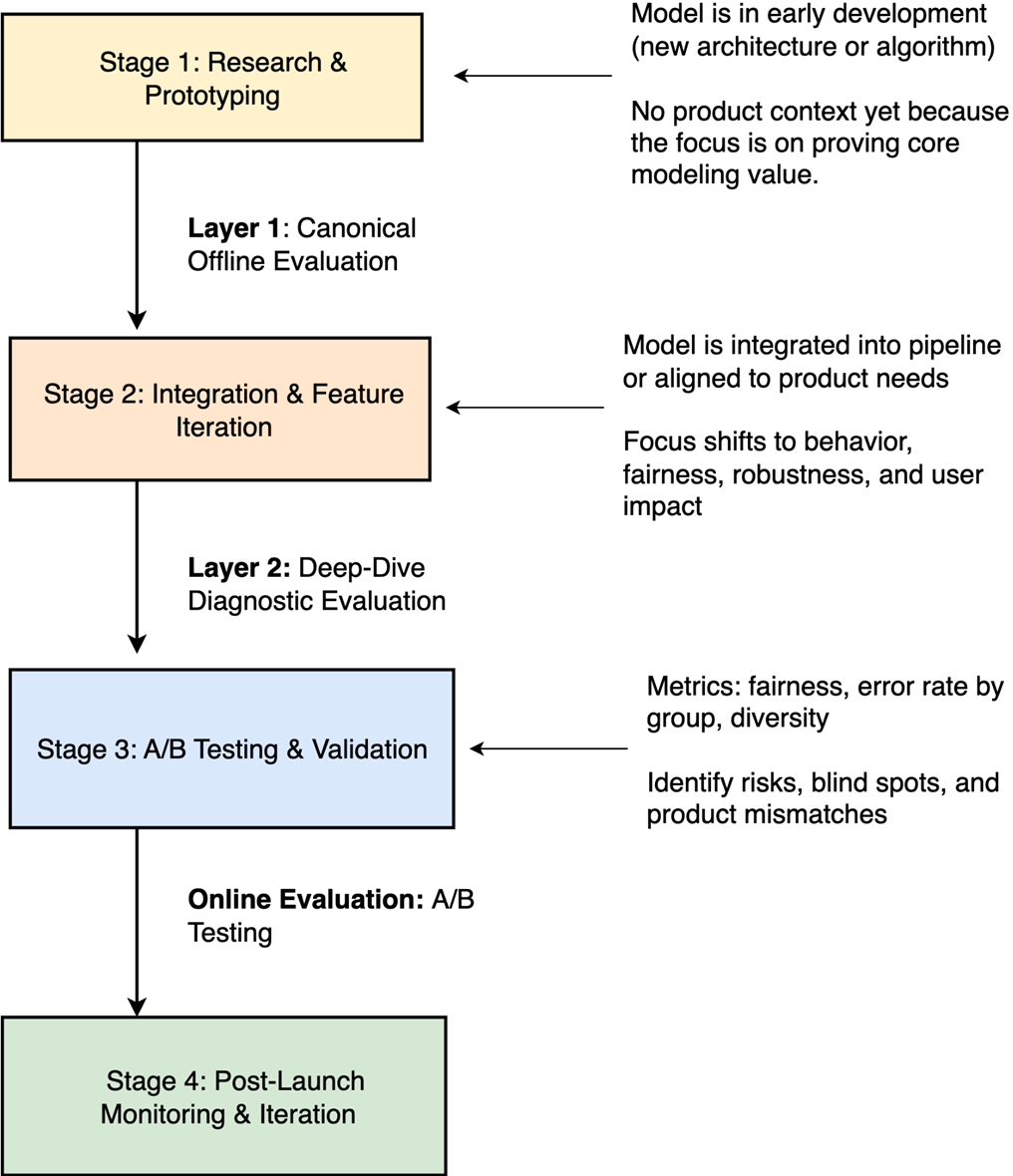
Leveraging offline evaluations to inform online experimentation strategy results in considerable optimizations. By reducing the number of model variants that graduate to the online experimentation stage, you're reducing the sample size for the A/B test, freeing up testing capacity for other A/B tests to run on the product and being more strategic with the changes you're exposing users to.
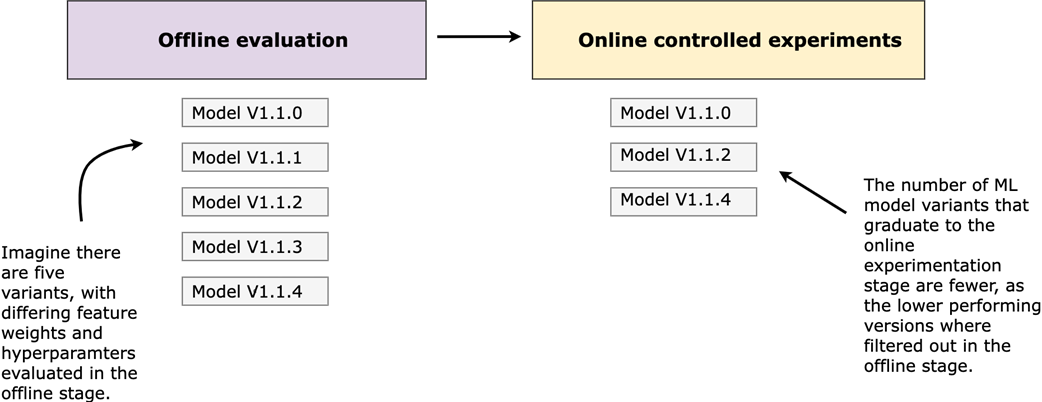
Summary
- Offline evaluations involve testing and analyzing a model's performance using historical or pre-collected data without exposing the model for real users to engage with in a live production environment.
- When iterating on a machine learning model, it's so important to gain as much insight into the impact or effect as possible before it's available in a product-user-facing setting. This is exactly what offline evaluations aim to do!
- The various offline metric categories and example metrics that ladder up to each category include Ranking Metrics and Classification Metrics.
- Recommender systems, search engines, fraud detection models, language translation systems, and predictive maintenance algorithms are typical real-world applications that benefit from offline evaluations. Offline evaluations allow such applications to be rigorously tested without exposing iterations to users, enabling teams to measure accuracy and relevancy before deploying changes to production.
- The more insight gained from an offline evaluation, the better decisions you make in the online controlled experiment phase.
- Correlating offline and online results enables more efficient model iterations by using offline evaluations to predict online performance, streamlining refinement and adjustments before exposing real users to the model changes.
- The product development lifecycle as it pertains to AI models and how offline evaluations are a key step in understanding impact and effectiveness. It's important to understand the complexities of integrating AI systems and to mitigate risks by using offline evaluations.
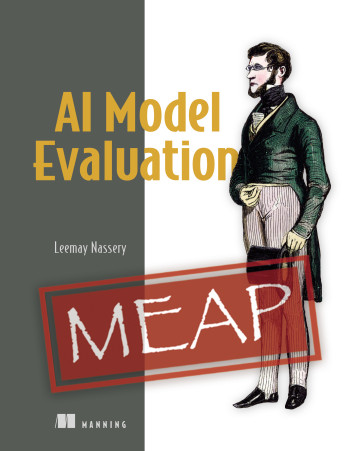 AI Model Evaluation ebook for free
AI Model Evaluation ebook for free